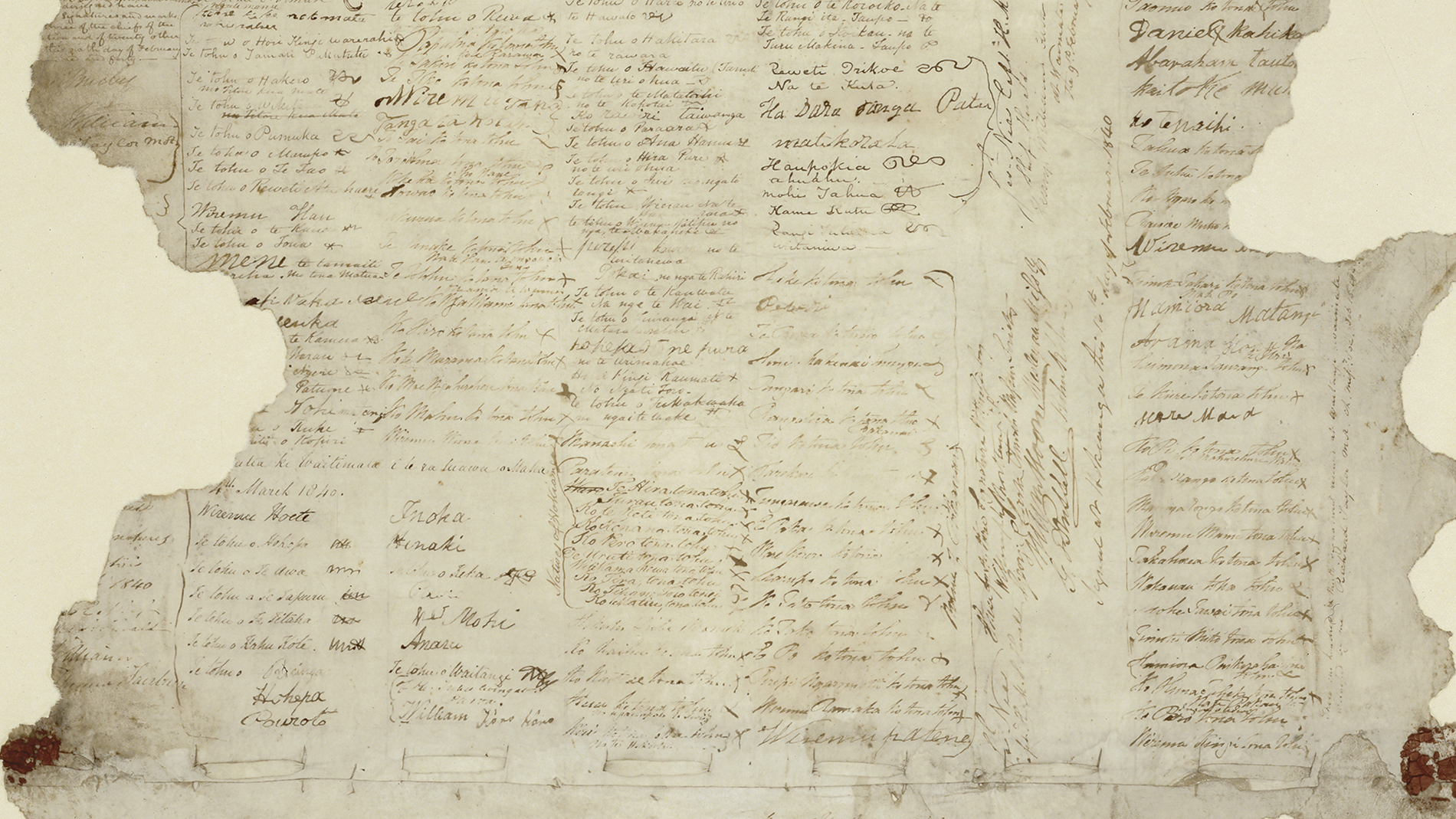Introduction
In the late 1830s, there were approximately 125,000 Māori in New Zealand and about 2000 settlers. More immigrants were arriving all the time though, and Captain William Hobson was sent to act for the British Crown in the negotiation of a treaty between the Crown and Māori.
On 6 February 1840, the Treaty of Waitangi was signed at Waitangi in the Bay of Islands by Hobson, several English residents, and approximately 45 Māori rangatira, Hone Heke being the first. The Māori text of the Treaty was then taken around Northland to obtain additional Māori signatures and copies were sent around the rest of the country for signing, but the English text was signed only at Waikato Heads and at Manukau by 39 rangatira. By the end of that year, over 500 Māori had signed the Treaty.
The Treaty of Waitangi is now on permanent display at National Library in Wellington as part of the He Tohu exhibition.
Historical information kindly provided by the Waitangi Tribunal. The information given below is intended as a general guide only, and should not necessarily be read as a statement of the views or findings of the Waitangi Tribunal. Readers interested in the tribunal's interpretation of the Treaty and its principles are directed to the reports of the tribunal.
The Treaty of Waitangi
-
The Treaty of Waitangi has two texts, one Māori and one English. The English text is not an exact translation of the Māori text. Despite the problems caused by the different versions, both represent an agreement in which Māori gave the Crown rights to govern and to develop British settlement, while the Crown guaranteed Māori full protection of their interests and status, and full citizenship rights.



To ask for help or report a problem, contact us
Tell us how we can improve the information on this page. (optional)